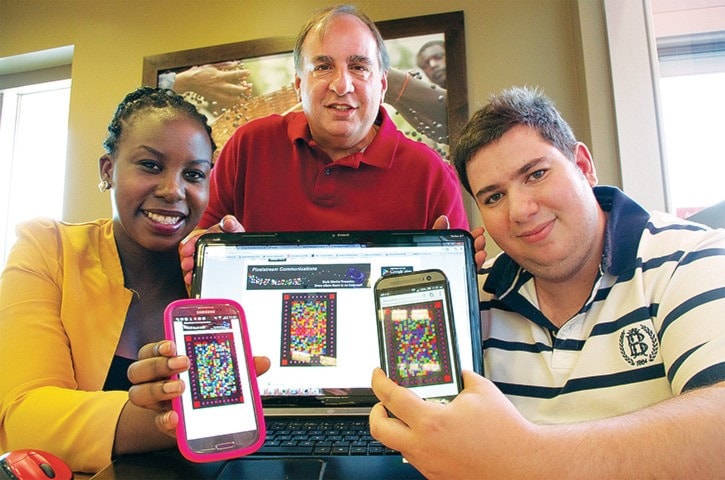A team of software engineers from Vancouver Island University has developed technology that could get people in developing countries wired to the web where the Internet doesn’t exist.
To promote its product and crowdfund a pilot project, the team has created Pixel Stream Communications.
Frank LoPinto, a VIU computing science professor and company CEO, along with software engineers Alican Kerman and Pauline Hagembe, need to raise $12,000 to finance field testing for their technology, called PXIT (pixel stream information transfer), in Hagembe’s native country, Kenya.
PXIT is based on an encoding system that can display pixelated digital information on any video display device, such as a standard TV, video monitor or even a digital photo frame. The second part of the system is an Android-based smartphone app, that can be downloaded for free, that enables the phone to read, store and play back the information scanned.
On screen, PXIT looks like a continually shifting colour QR code, but PXIT doesn’t link the phone to a website on the Internet. Instead, whole packages of information, such as medical alerts, news, music, educational materials, or just about any information one can think of, is transferred into the phone’s memory for playback later. The data can also contain links to websites the phone can connect to when its user is in an area where Wi-Fi is available.
“With a QR code, you basically just have a link that’s embedded in that image, so when you scan it, what you’re getting from that image is just a link and then your phone uses that Internet connection to take you to the link,” Hagembe said. “With our PXIT code we have actual information that is embedded in the pixel code ... You don’t need the Internet in your phone or the display device to get whatever is in there to your phone.”
The digital information can be fed to the display device by anything from a standard TV broadcast system to a DVD or flash drive hand-delivered to a remote location.
Hagembe sees the potential for widespread applications anywhere in the world, but especially in her native Kenya, where much of the population carries cellphones and there is an abundance of older TV technology, but no money to build Internet infrastructure.
“So we have people in those areas who can barely afford food, who can barely afford to live, but they have cell phones and TVs,” Hagembe said.
She said PXIT, for example, could potentially have a major impact in getting critical information to people in areas affected by the current Ebola virus outbreak.
The team has been working on the system together since March, but LoPinto started tinkering with the software in 2012.
The primary goal of the Kenya pilot project will be to demonstrate that Pixelstream’s Android app can decode PXIT codes displayed on Kenyan TV systems in rural areas with the quality required for the technology to work.
For more information, please visit www.pxit.tv.
